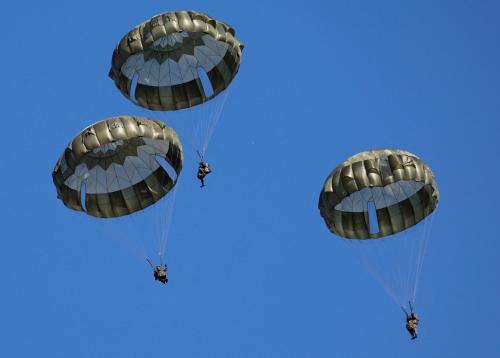This working paper is based off a book forthcoming later this year. Comments and feedback are welcome to
[email protected]
.
INTRODUCTION
These are extraordinary times in American national security policy. The nation remains involved in two of the longest conflicts of its history in Iraq and Afghanistan, with more than 4,000 lives lost over six years in Iraq and more than 600 lost over nearly eight years in Afghanistan, as well as cumulative costs to date approaching $700 billion in the former case and $200 billion in the latter.[1] Thankfully the prognosis in Iraq appears far improved in recent years; 2009 and 2010 will be momentous times in Afghanistan as the United States doubles combat forces there in hopes of turning around the direction of the conflict. Yet despite this wartime focus, President Bush’s second secretary of defense and President Obama’s first, Robert Gates, has seemed almost as interested in helping the State Department get funding for its units focused on nation building and stabilization missions as in lobbying for defense funds. In his words, “It has become clear that America’s civilian institutions of diplomacy and development have been chronically undermanned and underfunded for far too long…”[2] He also warns against “next-war-itis” among military planners, many of whom still prefer traditional high technology modernization programs to generating adequate resources for immediate needs in what was called by the Bush Administration the war on terror.[3]
The contemporary American national security debate has evolved in other important ways as well. For example, official Pentagon doctrine now formally considers such nation building, stabilization, and peacekeeping missions just as central to its portfolio as deterring or defeating traditional enemy combatants. At a more operational level, when coaching his troops, the country’s star general in Iraq, David Petraeus, emphasized restraint in the use of force as much as destruction of the enemy. In another domain of national security policy, several former secretaries of state and defense, including Republicans and Democrats, advocate the eventual elimination of all nuclear weapons on the planet. And with the Taiwan issue fairly quiet at present, security discussions about China now focus as much on our common interest in ensuring reliable energy supplies and preventing global warming as on preparing for scenarios that would pit our forces against each other.
[1] Steven M. Kosiak, “Costs of the Wars in Iraq and Afghanistan, and Other Military Operations through 2008 and Beyond,” Center for Strategic and Budgetary Assessments, Washington, D.C., 2008, available at www.csbaonline.org/4Publications/PubLibrary/R.20081215.Cost_of_the_Wars_i/R.20081215.Cost_of_the_Wars_i.pdf [accessed January 30, 2009], pp. iii, 6. Actual appropriations totals were $687 billion and $184 billion respectively, based on partial appropriations for 2009. The figure for Iraq includes $32 billion in State/aid activities as well as $3 billion in Veterans’ Affairs; the figure for Afghanistan includes $13 billion for State/aid activities.
[2] Speech of Secretary of Defense Robert M. Gates at the U.S. Global Leadership Campaign, Washington, D.C., July 15, 2008, available at www.defenselink.mil/speeches/speech.aspx?speechid=1262 [accessed August 1, 2008].
[3] Secretary of Defense Robert M. Gates, “The American Way of War,” National Defense University, Washington, D.C., September 29, 2008, available at www.defenselink.mil/speeches/speech.aspox?speechid=1279 [accessed September 29, 2008].
The Brookings Institution is committed to quality, independence, and impact.
We are supported by a diverse array of funders. In line with our values and policies, each Brookings publication represents the sole views of its author(s).



